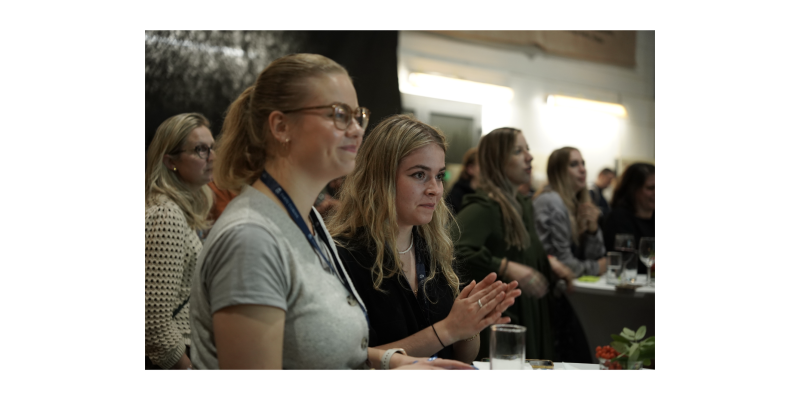NEWS & EVENTS

Meet the Nominees for the 2025 ENLIGHT Diversity & Inclusion and Sustainability Awards
These inspiring projects reflect ENLIGHT’s mission to foster inclusive, sustainable, and impactful learning communities across Europe. Each initiative tackles urgent societal challenges with creativity, empathy, and hands-on engagement — from climate action and food security to physical accessibility and social equity.
While the jury has already selected one winner and two runners-up per category, we’ll keep the final rankings under wraps until the official award ceremony in Uppsala. Join us there to find out who takes home the 2025 awards!
🏆 Diversity & Inclusion Award 2025 – Nominees
- Clara Cabanillas, University of the Basque Country
Understanding Deafblindness – A final bachelor project in Fine Arts and Design that raises awareness about dual sensory loss through visual communication. - Laura Fourcade – Association M-Tech, University of Bordeaux
Integration of international students – A mentoring and activity programme that fosters intercultural connection and inclusiveness. - Lívia Orlovská, Comenius University Bratislava
WheelShare – An accessibility-mapping initiative engaging local communities to crowdsource data on physical accessibility. - Active* Champions, University of Galway
A peer-led consent education and sexual violence prevention programme empowering student facilitators. - Iva Donckers, Ghent University
Workshops: Sustainable and Inclusive Events – Practical workshops promoting eco-conscious and accessible event planning. - Birgit Eggink & Zulima Martí Cuñat, University of Groningen
Sexual Wellness Education Initiative (SWEI) – Inclusive and culturally sensitive sex education workshops developed by students. - Miriam Calafa', University of Tartu
Supporting Student Well-being with Empathetic Robots – Research on the role of AI companions in addressing student loneliness. - Johannah Rybrant, Uppsala University
Equal opportunities – but with what resources? – A critical study exploring unequal access to support services for students with disabilities.
🌱 Sustainability Award 2025 – Nominees
- Ander González Ortega, University of the Basque Country
Smart Sensing Systems for Cutting Fluid Life Monitoring – An engineering-based solution for reducing environmental waste in industrial settings. - Yannick Käser & Elmo Francis, University of Bern
Boat2Bag – An upcycling initiative transforming discarded PVC boats into sustainable bags. - Clément Pfeiffer, University of Bordeaux
Sport Planet Thrift Shop – A second-hand sports equipment shop promoting reuse and reducing consumption. - Martin Iliáš, Comenius University Bratislava
PriFUK Sustainability – A faculty-based campaign for long-term sustainable habits in university communities. - Adam Mullins, University of Galway
SPÉIR SU Pantry Students’ Union – A food-sharing and redistribution initiative combating food waste and food insecurity. - Merel Janquart, Ghent University
Future Proef – A thesis project competition promoting real-world sustainability problem-solving. - Jasper David Rasokat, The University of Goettingen
Greening the Campus – From concept to implementation, transforming campus spaces with biodiversity and student involvement. - Pavel Petrenko, University of Groningen
Cost & Benefit Analysis for Green Office RUG – A strategic evaluation of sustainable investments and operations in a university setting. - Ilze Polekauskaite, University of Tartu
Validating Anti-phage Defense Systems in Pseudomonas – A biology research project contributing to sustainable biotech innovations. - Halala Ghaderi Andersson, Uppsala University
Green Detectives – A student-run podcast raising awareness about sustainability through storytelling and campus engagement.
🎉 Join us in celebrating these outstanding student initiatives and their contributions to a more inclusive, diverse and sustainable future!
📍 Learn more and follow the 2025 Teaching & Learning Conference:
🔗 Conference Website
#DiversityAndInclusion #Sustainability #ENLIGHTAwards #TeachingAndLearning #StudentImpact #HigherEducation #EuropeanUniversities